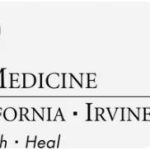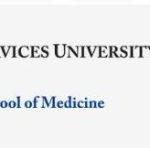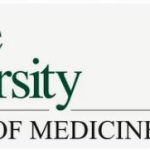Tufts University School of Medicine was established in 1893, when the medical school of Tufts College was incorporated into the newly formed Tufts University. Initially, the school offered a two-year medical program for students who had already earned their bachelor’s degree. In 1895, the school began offering a four-year medical program for students with no prior college education. During this period, the school also began offering postgraduate courses and established its first residency program in 1905. The residency program was designed to provide hands-on training to physicians in order to improve patient care. By 1910, Tufts University School of Medicine had grown significantly and offered several specialty programs such as obstetrics and gynecology, pediatrics, ophthalmology and otolaryngology. The school also became one of the first in the country to offer a fellowship program in radiology. During this time period, Tufts University School of Medicine grew significantly and by 1920 it was one of the largest medical schools in New England.
In 1927, Tufts University established its own hospital—Tufts Medical Center—which became an integral part of Tufts University School of Medicine’s educational mission and provided students with clinical experience through observation and patient contact. The hospital also served as a teaching facility for medical students as well as physicians from other institutions who wanted to gain additional knowledge or experience in specific areas of medicine. In addition, it provided postgraduate training opportunities for physicians who wanted to specialize in certain fields such as pediatrics or anesthesiology. Over time, more advanced technology was introduced at Tufts Medical Center which allowed doctors to diagnose patients more quickly and accurately than ever before. Today, the hospital is one of the most advanced medical centers in New England with state-of-the-art equipment that is used by both faculty members and students alike for research purposes as well as patient care needs.
Tufts University, abbreviated as TU, is one of the top-ranked U.S. medical schools located in Boston, MA. Keep reading to see admissions application information including average GRE scores, admissions selection factors and dual degree programs of Tufts University.
136 Harrison Avenue
Boston, MA 02111
(617) 636-6571
Admissions E-mail: med-admissions@tufts.edu
Web site: http://www.tufts.edu/med
Electronic application: http://www.tufts.edu/
med/admissions/fye_secondary_app.html
Fall 2008 Admissions Information
AMCAS application accepted? Yes
Earliest application date: 06/01
Application deadline: 11/01
Oldest MCAT considered: 2005
Application fee: $105
Director of admissions: Thomas M. Slavin
Does this school ask for a secondary application as part of the admissions process? Yes
This school requires undergraduate work in these subjects in order to apply: biology, organic chemistry, inorganic (general) chemistry, physics
Is a personal interview required for admission? Yes
Are interviews conducted at the medical school? Yes
Acceptance notice to regular application for the 2007-2008 first-year class:
-Earliest date: October 15
-Latest date: August 21
Applicant’s response to acceptance offer for the 2007-2008 first-year class:
-Maximum time in weeks: 2 weeks
-Does the school consider requests for deferred entrance? Yes
-Deposit to hold place in class: $100
-Deposit due: At time of acceptance offer
-Deposit refundable prior to: May 15
-Starting month for the class of 2007-2008: August
Early Decision Plan application period for the 2007-2008 first-year class:
-Does the school have an Early Decision Plan (EDP)? Yes
-EDP application period begins: N/A
-EDP application period ends: N/A
-EDP applicants notified by: N/A
Fall 2005 Admissions Statistics
Tufts University School of Medicine has an impressive admissions rate, with a total of 5,872 applications for the 2020-2021 academic year. This resulted in 855 matriculants and 667 accepted applicants. The accepted applicants had an average MCAT score of 519, which is higher than the national average. Additionally, the school boasts a diverse student body with a range of backgrounds and experiences. Over 40 percent of the accepted applicants were from underrepresented minority groups, while over 25 percent were first-generation college students. The school also prioritizes service to underserved populations and encourages all their students to engage in community service activities in order to better understand the needs of different communities. The admissions process is highly competitive, as every year Tufts receives thousands more applicants than they can accept into their program. However, those who are successful demonstrate strong academic achievement and demonstrated commitment to public service or healthcare professions.
| Applied | Interviewed | Accepted | Enrolled | |
| Total: | 6,694 | 824 | 453 | 171 |
| In-state: | 607 | 206 | 125 | 76 |
| Out-of-state: | 6,087 | 618 | 328 | 95 |
| Women: | 3,506 | 406 | 214 | 75 |
| Minorities: | 2,567 | 345 | 148 | 52 |
| International: | 213 | 3 | 1 | 1 |
Acceptance rate: 6.8%
GPA
Average undergraduate GPA: 3.61
MCAT
Overall score (composite): 10.5
Verbal reasoning: 10.2
Physical sciences: 10.6
Biological: 10.8
Writing: P
Undergraduate Majors
Biological sciences (biology, microbiology, zoology, etc.): 45%
Physical sciences (biochemistry, chemistry, engineering, etc.): 20%
Non-sciences (sociology, economics, English, etc.): 26%
Other health professions (nursing, pharmacy, etc.): 3%
Mixed disciplines and other: 6%
|
Combined Degree Programs
Combined degree programs offered: M.D./Ph.D., M.D./M.B.A., M.D./M.P.H.
Does the school have a combined college/M.D. program? No
Number of years to complete combined college/M.D. program: N/A
Web site for combined college/M.D. program: N/A
Selection Factors
Details on the policies, preferences, criteria, factors and procedures used in the M.D. admission process:
(Data appear as originally submitted by this school)
Applicants who apply via the national application service (AMCAS) are requested to complete a school-specific secondary application. All applicants who complete a secondary application are considered for a personal interview based on the qualifications presented on their application. The Admissions Committee meets monthly to review these candidates and admits selected applicants on a rollin.








